Information (prices, returns, unavailable items, stock level information) can be added to the catalogue (BMEcat) via separate files. You can find more information here.
- Conditionsfile (CSV)
- Whitelist (CSV)
- Custom tariff numbers via CSV
- Returns conditions via CSV
- Stock level by CSV
- Item labels via CSV
Conditionsfile (CSV)
It is possible to also incorporate conditions and content for the existing catalogue via a separate CSV file. In this way, prices, bulk prices, delivery times, customer-specific labels, customs tariff numbers, etc. can be added to the catalogue and replaced there.
Important: A catalogue (BMEcat) must be provided at least once! The conditions file does not work without a basic catalogue.
Creation and structure of the conditions file
You can create the conditions file using Microsoft Office (Excel). The following column headers and thus information are possible:
Column name | Description |
SUPPLIER_AID | Supplier item number (mandatory information) |
ARTICLE_REFERENCE1 | Item number for the reference item |
CONTENT_UNIT | Content unit |
DELIVERY_TIME | Delivery time |
DESCRIPTION_LONG | Long description |
DESCRIPTION_SHORT | Short description |
EAN | EAN |
LOWER_BOUND | Price scale boundaries in price scales |
MANUFACTURER_AID | Manufacturer number |
MANUFACTURER_NAME | Manufacturer name |
NET_CUSTOMER | Customer price |
NET_LIST | Mercateo purchase price |
NO_CU_PER_OU | Packaging quantity (number of content units per order unit) |
ORDER_UNIT | Order unit |
PRICE_QUANTITY | |
QUANTITY_INTERVALL | Quantity scale |
QUANTITY_MIN | Minimum order quantity |
WA_NR | Customs tariff number |
SUPPLIER_AID is mandatory information, all further columns can be used as required. A conditions file with price information is shown in the following example:
Example of a conditions file (Excel view)

Explanation of the individual columns:
SUPPLIER_AID -> Item number
LOWER_BOUND1 -> 1st price scale
NET_LIST1 -> Purchase price for the 1st price scale
LOWER_BOUND2 -> 2nd price scale
NET_LIST2 -> Purchase price for the 2nd price scale
Saving of data as a CSV file
After editing, save the Excel table for safety. Next, export the data as a CSV file:
File > Save as > File type: “CSV (separator-separated) (*.csv)”
You can download example files in the CSV format on the following page: Examples of additional CSV files
If you can export the CSV file directly from your system, you do not have to use Excel to create it.
Requirements
Only semicolons are permitted as a separator.
The number of semicolons must be the same in every row.
The spelling of the headers cannot be changed.
Please note the use of capital letters within the headers.
A separate conditions file is required for each catalogue.
Information about price information
If you use bulk prices, the price must become smaller as the price scale increases.
Only the items for which a valid price is saved in the conditions file are put online.
The price must match the order unit in the catalogue.
For exclusive catalogues, please use net_customer as a price type (column header: NET_CUSTOMER).
For Mercateo catalogues, please use net_list as a price type (column header: NET_LIST).
This is what a correctly created conditions file could look like in a text editor (Example of a conditions file (text editor)):

Activation in the Mercateo system
You first create a conditions file according to the requirements above.
Send this CSV file to support@unite.eu
Mercateo then tests the file and makes all the necessary settings in the system.
You gain a catalogue preview, can check everything and release the CSV file for the catalogue.
Mercateo informs you about the next steps (naming regulation, transfer via FTP etc.).
Conditions file as whitelist
Besides updating product information and conditions, you can also control the visibility of the products on the Mercateo platform using a conditions file. You can find more information about the whitelist here.
A whitelist does not necessarily have to contain product information and can also only consist of one column with the corresponding item numbers. If you would like to activate a whitelist or set your conditions file as a whitelist, please write to support@unite.eu.
Whitelist (CSV)
It is possible to control the visibility of the items on the Mercateo platform via a separate CSV file. This kind of CSV file is called a whitelist. A whitelist can either be a list of just item numbers or a file with conditions or product information.
Please note: After incorporation, only the items that are contained in the CSV file are shown online.
Creation and structure of the whitelist
A whitelist can be created using Microsoft Office (Excel). The minimum requirement is a column with the items numbers. Please use SUPPLIER_AID as the header:
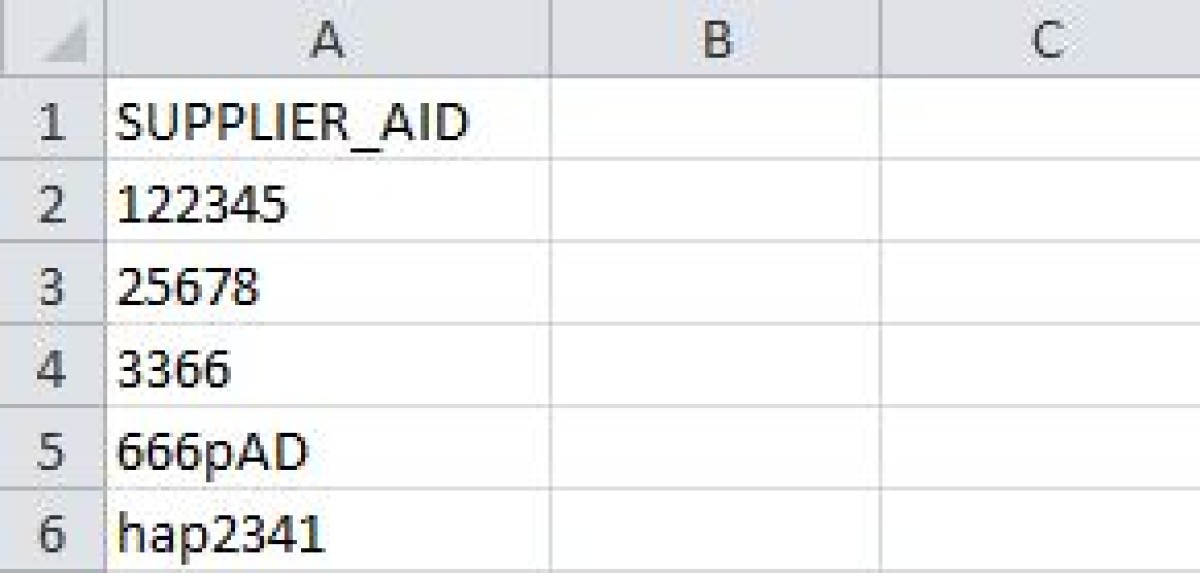
Requirements:
The spelling of the header cannot be changed.
Please note the use of capital letters within the header.
A separate whitelist is required for each catalogue.
If you not only want to control the visibility but also update conditions for the saved products (prices, delivery times, etc.) via this CSV file, you can also used a conditions file as a whitelist. You can find more information about this kind of conditions file here.
Saving of the whitelist as a CSV file
After editing, save the Excel table for safety. Next, export the data as a CSV file:
File > Save as > File type: “CSV (separator-separated) (*.csv)”
You can then also check the CSV file in the text editor. The following illustration shows a whitelist with just item numbers:
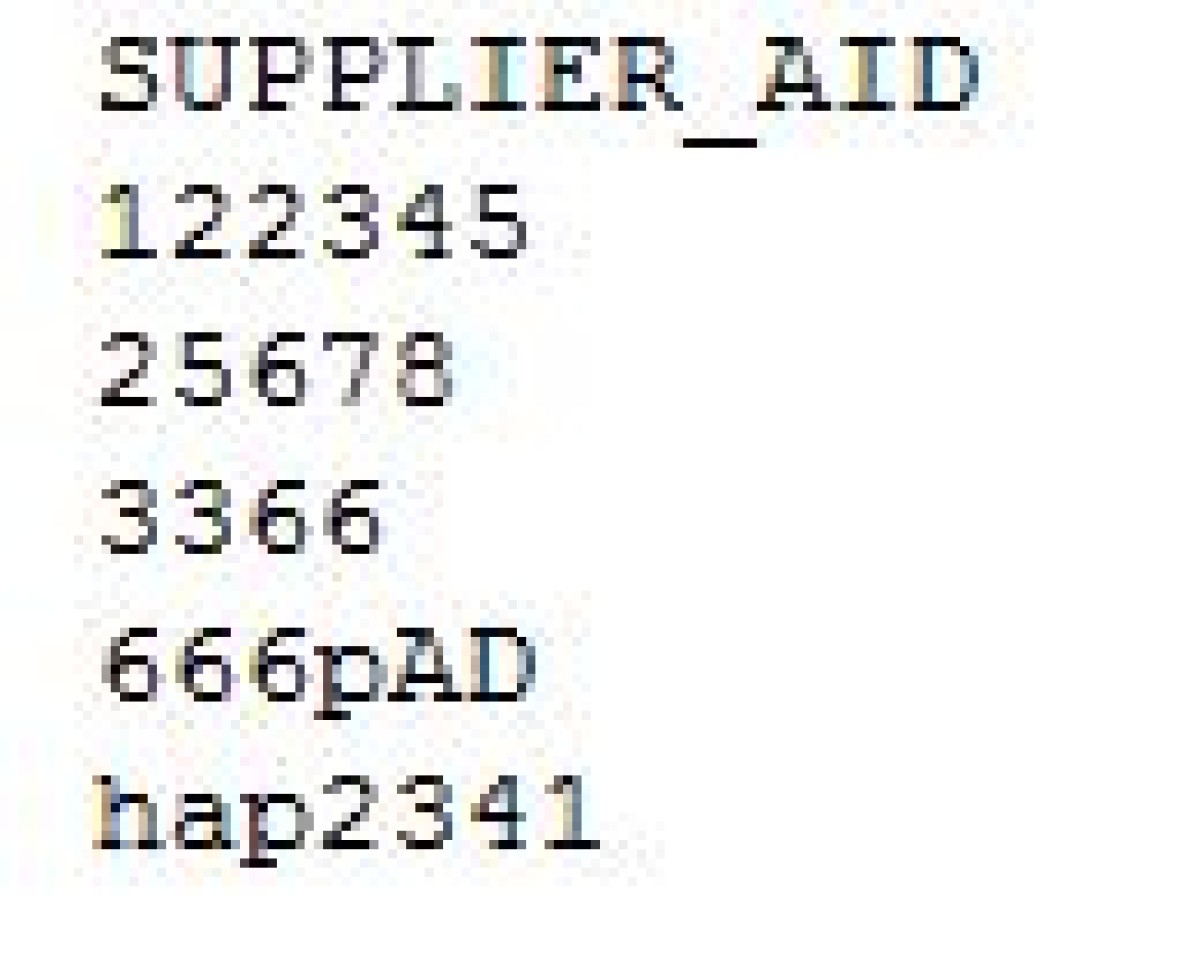
Activation in the Mercateo system
You first create a whitelist or a conditions file according to the requirements above.
Send this CSV file to support@unite.eu. for checking. Please state in the e-mail for which catalogue you would like to activate the file.
Mercateo then tests the file and makes all the necessary settings in the system.
You gain a catalogue preview, can check everything and release the CSV file for the catalogue.
Mercateo informs you about the next steps (naming regulation, transfer via FTP etc.).
The whitelist or conditions file is transferred via FTP via future update processes and automatically processed.
Custom tariff numbers via CSV
The customs tariff number has 8 digits and can either be transferred via the catalogue (BMEcat) or in a separate CSV file.
You can find more information about technical implementation in the catalogue (BMEcat) here. How you can transfer customs tariff numbers via a CSV file is described below.
Create CSV file
The file consists of 2 columns and has the following structure:

The item numbers must be unique and correspond to the item numbers in your catalogue.
Separator: Semicolon
The row with the header SUPPLIER_AID;WA_NR is mandatory information.
If you already use a price file or a conditions file (CSV) for your catalogue, you can also transfer the customs tariff numbers in this. To do this, simply create a further column with the header WA_NR. Nothing changes in terms of the naming of the file.
Transfer to Mercateo
Naming of the file:
katalogname_tariffnumber.csv
Please note:
You are informed of the catalogue name by Mercateo.
Please abide by the file naming. Without a correct name, the CSV file is either not processed or not allocated to the right catalogue.
Transmission of the files:
The CSV file is transferred via FTP. The access data will be communicated to the supplier during onboarding. If you are an existing supplier, you already have the FTP login details.
Once you have created the CSV file, please contact support@unite.eu.
You then receive all further information from Mercateo.
Returns conditions via CSV
Besides the standard information, up to 3 deviating return conditions can be defined for the products within a catalogue. Following activation in the Mercateo system, you can control the allocation of your products to the respective returns conditions via CSV file. The following steps are required for activation:
Inform Mercateo of returns conditions
Please first contact your supplier supervisor at Mercateo. He will send you a supplier master data sheet (SDS) in the form of an Excel table. You must send this back completed. Please ensure that all information regarding returns conditions is correct and complete.
Example SDS for public platform:
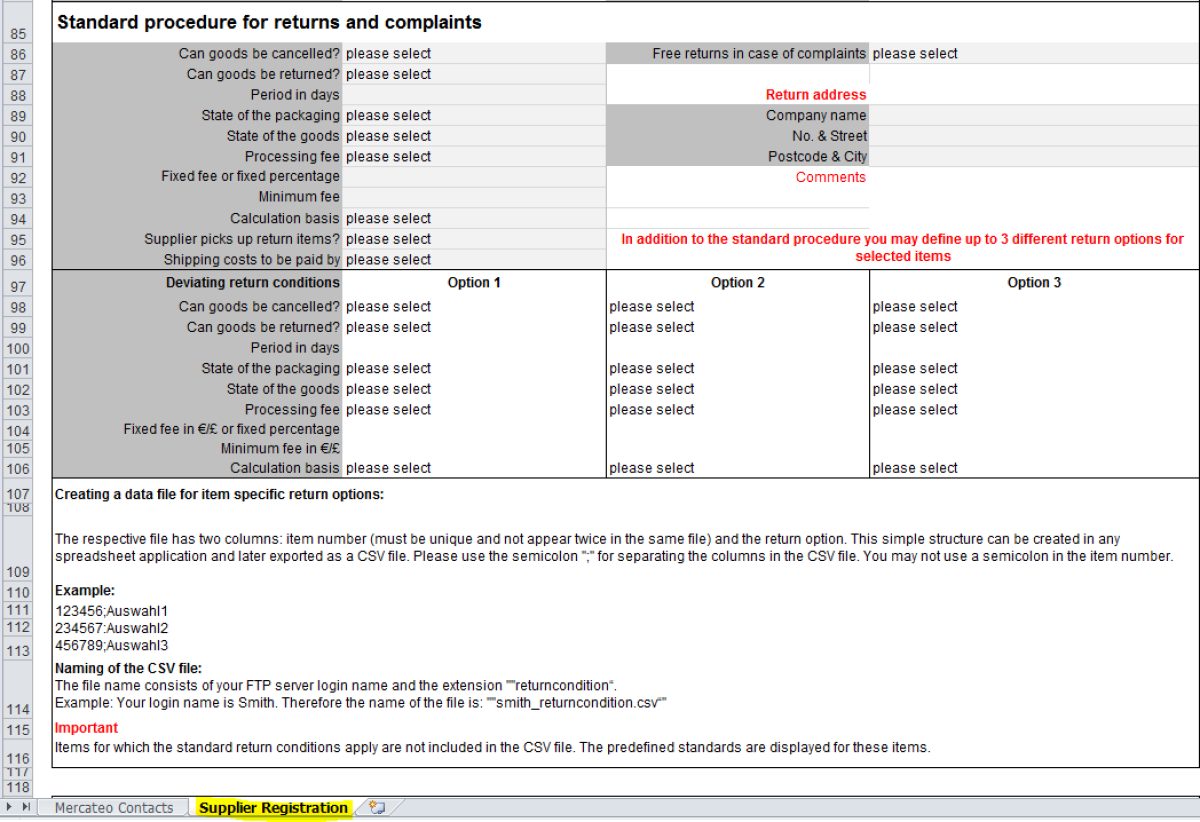
You will be informed by Mercateo once all of the information is created in the system. You can then transfer the allocation of the products to the respective returns conditions via a CSV file. Provision takes place via FTP.
Create CSV file
The CSV file consists of 2 columns and has the following structure:

The item numbers must be unique and correspond to the item numbers in your catalogue.
Separator: Semicolon
Items that fall under the standard returns conditions are not included in the CSV file. The predefined standard is displayed for these items.
If you have created the CSV file, please contact Mercateo Catalogue Management. You can find our contact person in the SDS.
Transfer to Mercateo
Naming of the file:
katalogname_returncondition.csv
Please note:
You are informed of the catalogue name by Mercateo.
Please abide by the file naming. Without a correct name, the CSV file is either not processed or not allocated to the right catalogue.
Transmission of the files:
The CSV file is transferred via FTP. The access data will be communicated to the supplier during onboarding. If you are an existing supplier, you already have the FTP login details. The associated FTP directory will be provided to you by Mercateo Catalogue Management
Stock level by CSV
File format and structure
Stock levels can be transferred to Mercateo as a CSV file via FTP. Processing takes place automatically.
The format and structure of such stock level files are predefined. Each data record is composed of two data fields (columns). The first column contains the item number and the second column the associated stock. Here is an example:

Information on the structure
The header (SUPPLIER_AID;QUANTITY) in row 1 does not have to be stated.
Data records are separated from each other by means of a line break (CR-LF (Chr(13),Chr(10)).
Separator: Semicolon
Character encoding: UTF-8
SUPPLIER_AID column:
The item number in the CSV must also correspond to the item number in the catalogue. Otherwise, it is not possible to allocate the stock level.
The item number is also called SKU (Stock Keeping Unit), Supplier Article Number or SupplierAID.
QUANTITY column:
Please do not use thousands separator.
Only whole-numbered, positive values are permitted.
Transfer to Mercateo
Naming of the file:
availability-data-catalog-Präfix.csv
Note:
The prefix, also known as CatalogueID, is given to you by Mercateo Catalogue Management during the incorporation of your catalogue.
Please abide by the file naming. Without a correct name, the stock level file is either not processed or not allocated to the right catalogue.
Transmission of the files:
The CSV file is transferred via FTP. The access data will be communicated to the supplier during onboarding. If you are an existing supplier, you already have the FTP login details. The FTP directory in which the stock level file should be saved in the future will be provided to you by Mercateo Catalogue Management.
You can also send us the CSV file as a ZIP file.
Please clarify the update frequency with your supplier supervisor or customer. The stock levels file should be updated at least once a day. Shorter time periods of up to thirty minutes are also possible.
To activate the stock level query, please contact your supplier supervisor or catalogue manager at Mercateo.
Item labels via CSV
Items in exclusive catalogues can be supplemented with additional information, values or labels. These supplements can influence the sorting, the displaying of search results, the item detail page, or the OCI transfer data.
If the item labels are not also supplied via BUYER_AID in the catalogue files or are incomplete, you have the option of incorporating these via an additional CSV file.
As a supplier
… please transfer the CSV file via FTP. You can find more information about CSV provision here.
The structure corresponds to the structure of the CSV on the customer side. Read more about this in the section Structure of item labels CSV below.
As a customer
… you have the opportunity to include the item labels in the system via CSV file using catalogue management. You can find more information under the following points.
Structure of item labels CSV
The CSV file must display the following format:

The column “SUPPLIER_AID” contains the item numbers for your supplier. These numbers must correspond to the item numbers from the catalogue.
The other columns contain the desired labels. Please only use the types coordinated with Mercateo (BUYER_AIDs) as the header.
If you require new labels, please contact support@unite.eu.
Important: SUPPLIER_AID (= the item number) must always be stated.
Creating the CSV in Microsoft Office
The CSV file can be created most easily via Excel or other spreadsheet software. As you need the item numbers from the catalogue, we recommend that you find these in the test result Products that have passed the basic test.
Test result: Products that have passed the basic test
Filter for the desired supplier in Mercateo catalogue management and select the most current version of the catalogue.
Click on this version. You will find the test result in the details on the Display test and results window.
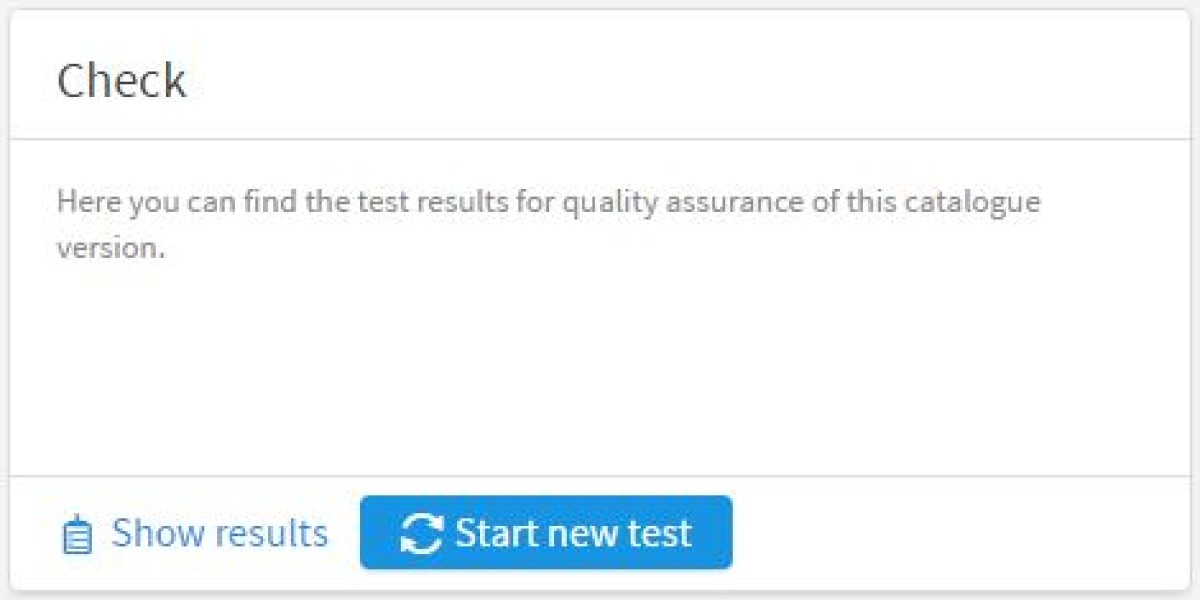
Please click on Download there. You gain a file with all of the item numbers available in the catalogue.
Edit Excel table
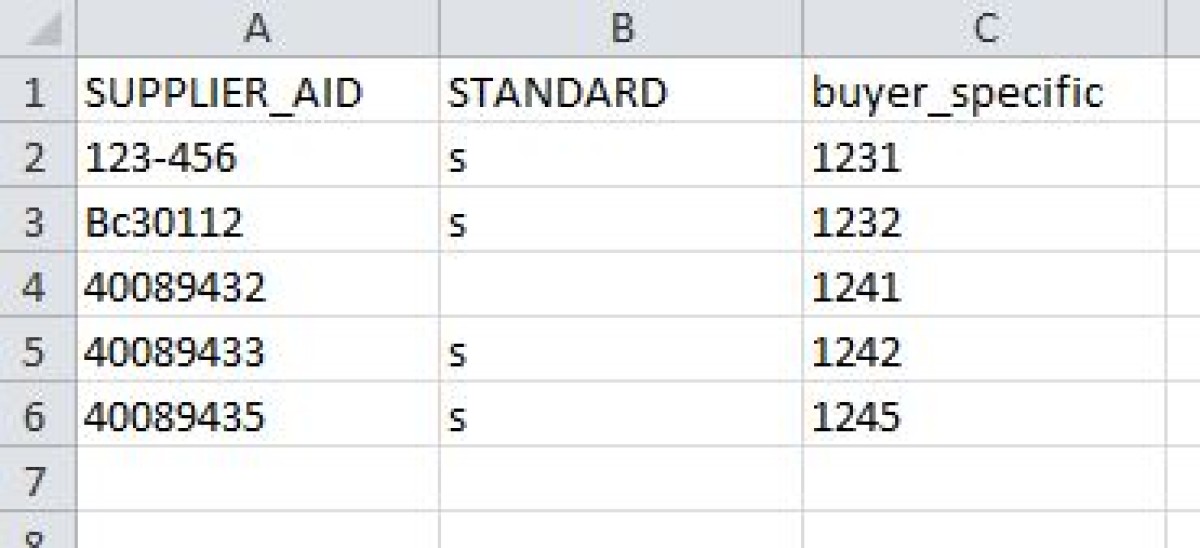
Create a new workbook in Excel and write the necessary designations (SUPPLIER_AID, STANDARDSORTIMENT, buyer_specific…) in the first row
Copy all item numbers from the test result above into the first column (under SUPPLIER_AID).Please note:Should you have item numbers preceded by 0, format the previous column as “Text”.
Supplement the table with the desired values.
Save the Excel table for safety.
Create CSV file
Next, save the Excel table in the CSV format. To do this, File > Save as > File type: “CSV (separator-separated) (*.csv)”
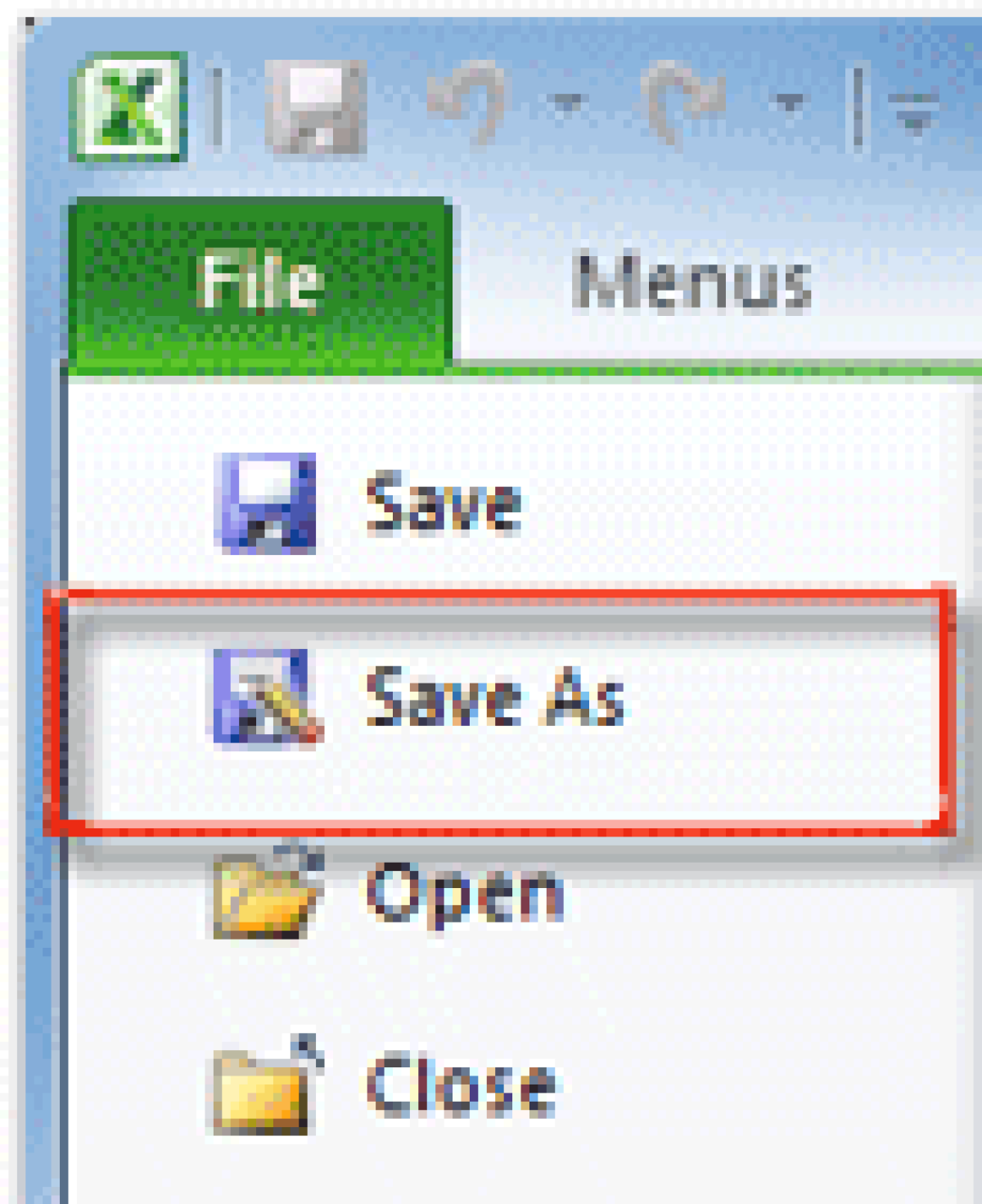

You can then check whether the export as a CSV was successful using a text editor. This is how a functioning file would look:

Please note is essential that the file is saved in the CSV format. Files in other formats (XLS, XLSX, …) are not processed by our system.
Activation of the CSV
You can now upload the file for the desired catalogue version in catalogue management and have it processed.
Uploading of the CSV file
Click the desired catalogue version within the catalogue versions. In the details, you can now upload the file in the Item labels window.
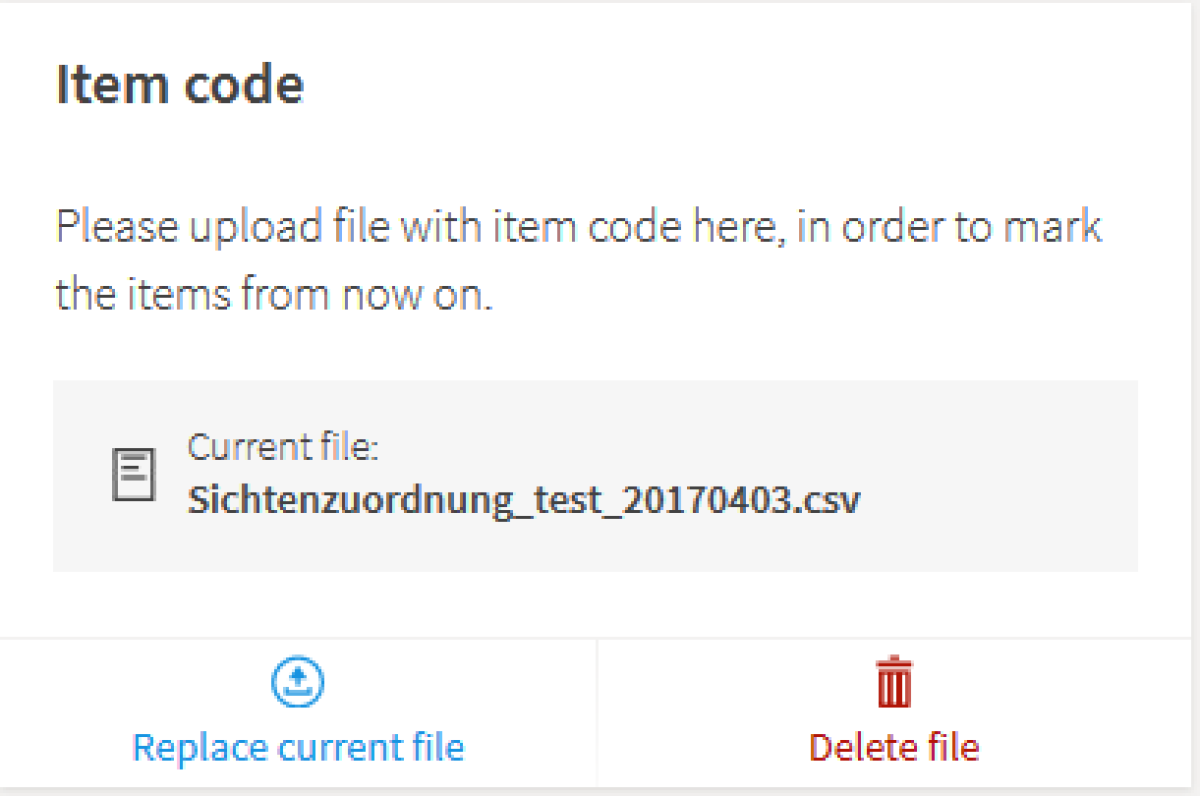
This process can take several minutes.
Activation of the CSV file
Two steps are required in order for the values from your updated file to also be adopted and activated in the system.
1. Check catalogue version
In order to check the catalogue version again, please click on Start new test in the Test window. This process can take several minutes.
After the test, you can check the labels under Display results in the test result Products with BUYER_AID.
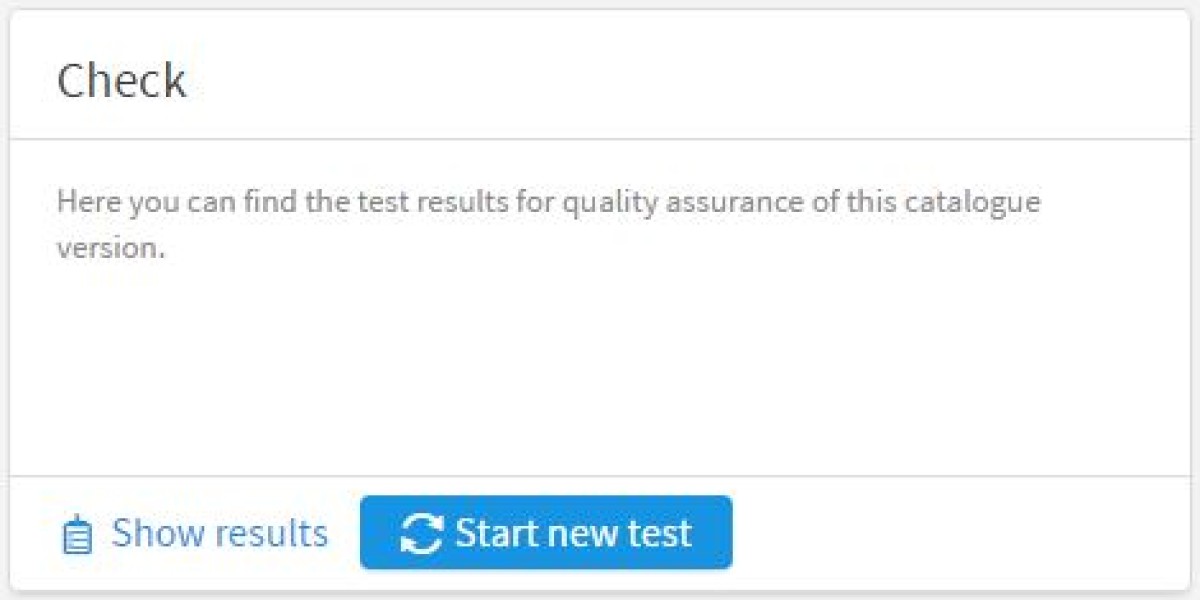
2. Put online version online
Once the catalogue version has been checked successfully, you can place it online.
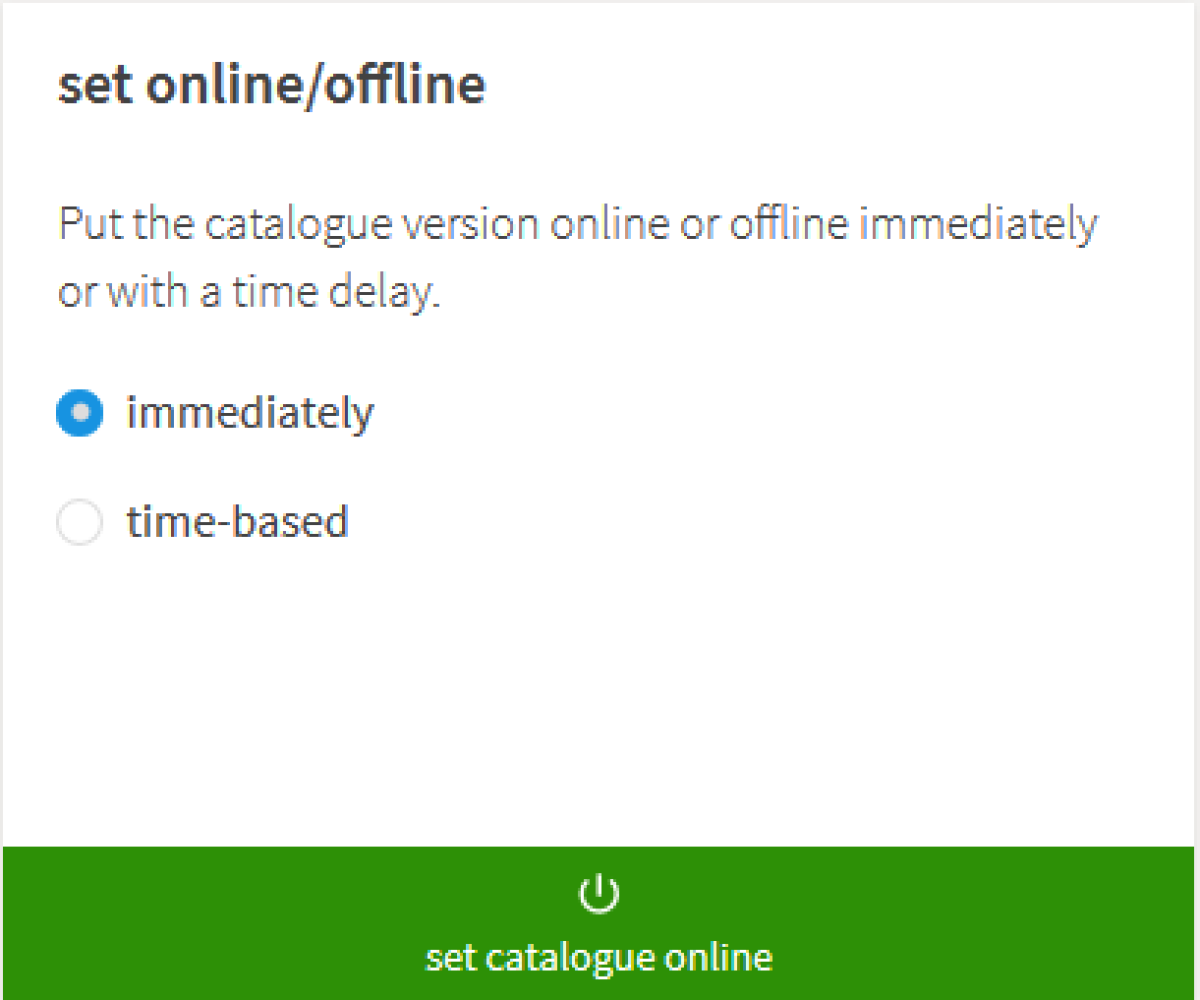
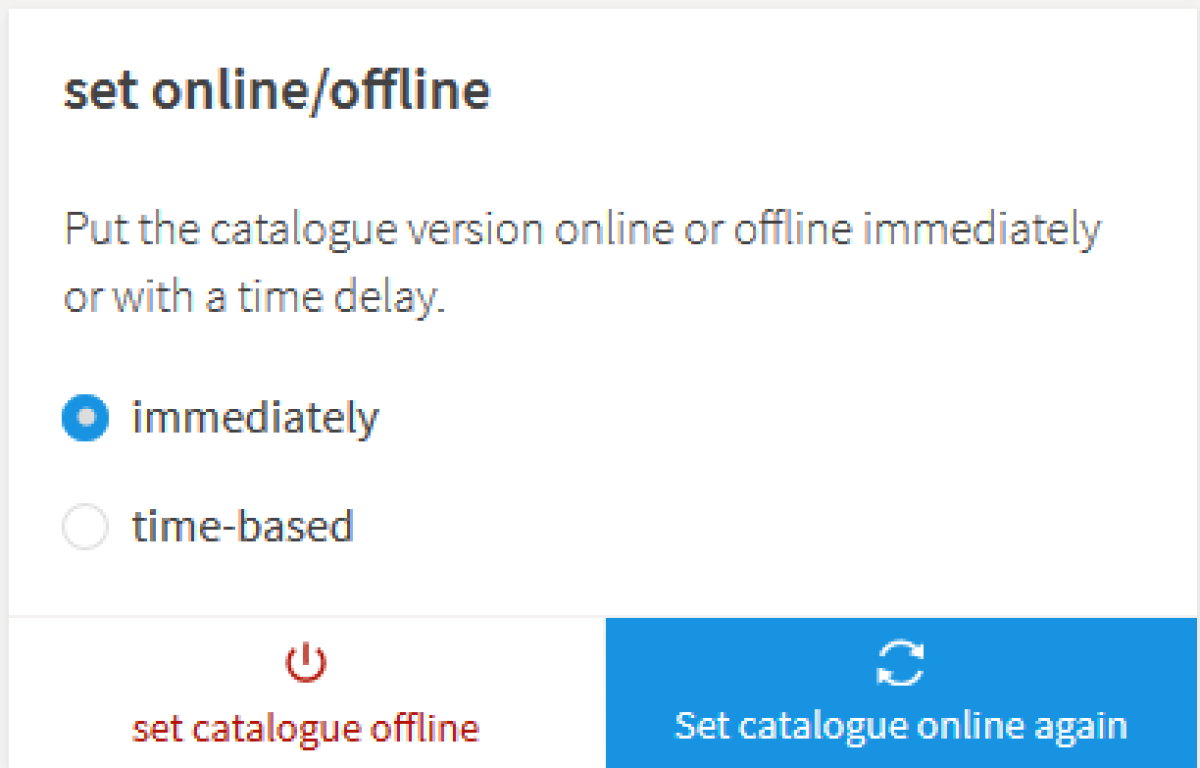
Deletion of the CSV
If the CSV is no longer required or was uploaded with errors, you can also delete it again.
To do this, click the desired catalogue version.
Please note: If the CSV file should also be deactivated for all future catalogue versions, you must use the latest version.
You can then delete the CSV file in the Item labels window.
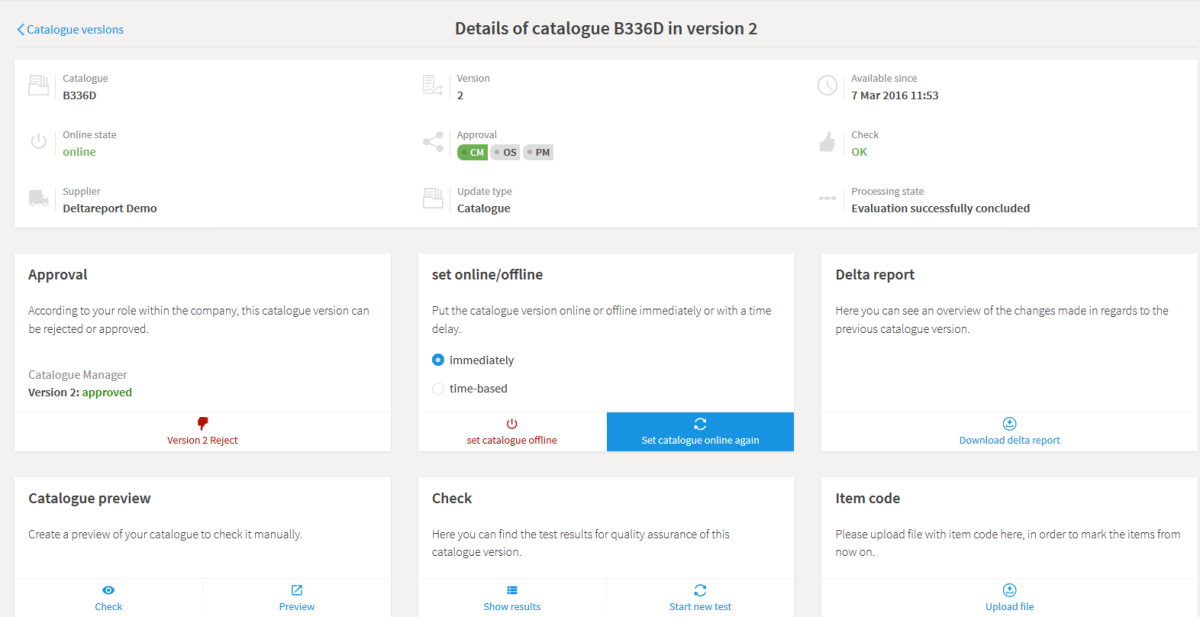
In order for the CSV file and the labels and information contained there to also be removed from the online version, this version must be tested and put online again.
Afterwards, the test result Products with BUYER_AID only contains the values from the catalogue.
Causes of errors and correction information
You will be shown whether a CSV file has errors when you upload it. If you receive error messages after the test, please try to delete the CSV file from the catalogue version, correct it and then incorporate it again. The following error analysis checklist could be helpful:
1. Checking of CSV format:
Was the file transferred in the CSV format? If not, please create a CSV file and upload this.
2. Content-related check:
Is there a row with a header?
Were item numbers saved in the CSV?
Do the item numbers correspond to those in the catalogue?
If there are preceding zeros in the item numbers, were these correctly exported from the Excel into the CSV?
If not, please process the Excel table and upload the resulting CSV for the desired catalogue version again.
3. Separator check:
Have you used semicolons as separators? If not, please try to export the data from Excel again, as described in point Creating the CSV in Microsoft Office.
4. Checking of the columns:
If you open the CSV file in the text editor, are the columns and content shown correctly? Does every row have the same number of semicolons? If not, please try to export the data from Excel again, as described in point Creating the CSV in Microsoft Office.
If, despite the checklist, you are unable to correct the error, please contact support@unite.eu.